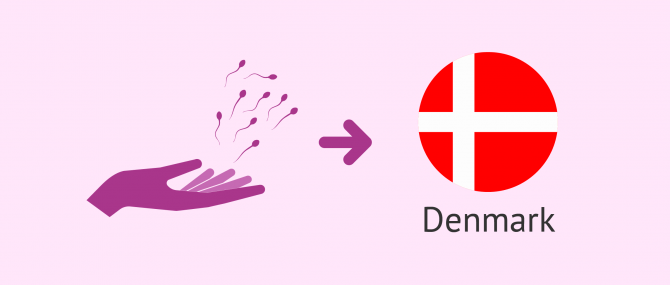Denmark is a top destination for sperm donation. There one can find one of the world's largest sperm banks, which exports semen samples to more than 80 countries across the globe.
Danish regulations allow both anonymous and non-anonymous sperm donors, something that opens a range of possibilities for prospective recipients.
Sperm shipping of donor vials to foreign fertility clinics is possible, as well as home delivery for the own use of the patient herself, thereby allowing her to undergo at-home artificial insemination.
In case the donation takes place within Denmark, the prospective mother will have no alternative but to contribute her own eggs, as Danish regulations forbid double-donor IVF for accessing a fertility treatment in this country.
When to use donor sperm
Single women, as well as lesbian and heterosexual couples, can turn to Danish sperm donors for accessing fertility care, whether they do so in Denmark or their home country.
The main reasons why these patients may need to use donor sperm to have a baby are the following:
- Absence of a male partner, as in the case of single mothers by choice (SMC) and lesbian couples who undergo intrauterine insemination (IUI) or in vitro fertilization (IVF).
- Presence of genetic abnormalities in the male partner, likely to be inherited by offspring.
- Sperm production problems (azoospermia) or any other severe abnormality compromising sperm quality.
Sperm donor profiles
Every man from Denmark or any other nationality who offers himself as a prospective sperm donor in a Danish fertility clinic should indicate what type of donor he wants to become.
Firstly, the candidate must meet the basic requirements, associated with his age and state of health. Only those candidates who pass this pre-screening will officially be allowed to donate their sperm cells.
After proving the donor is physically and mentally prepared to bear the sperm donation process safely (both for him, the recipient and the baby-to-be), the conditions under which the donation is to be carried out will be established.
There is a varied range of possibilities:
- Anonymous donors: Recipients do not meet his donor, not viceversa.
- Anonymous donors with an extended profile: Even though intended parents do not know their sperm cell donor in person, they can get detailed information about him.
- Open donors: This is a semi-known type of donation, meaning that even though prospective parents cannot meet the donor, children are allowed to do so when they turn 18 years old. From that moment on, the fertility clinic or sperm bank can provide the donor-conceived child with private information about the donor.
- Known donors: Danish regulations allow intended parents to choose who they want their donor to be. Then, the donor will be screened and accepted only if he meets all the requirements.
Selecting one of the above mentioned profiles depends on the preferences of each patient.
Candidates should report to the fertility clinic or sperm bank of their choice what type of donor they want to become. While some prefer to remain anonymous, others do not want to take away the child's right to find out about his/her biological origin.
Danish sperm donor registry
When one chooses to use an open sperm donor from Denmark, the donor-conceived child has the opportunity to meet potential half-siblings in the future if he or she wishes so.
The main reasons why people use this database are linked to curiosity above all, although getting in touch with half-siblings is usually a positive experience for them, too.
The registry, created by the Swedish non-profit organization "Scandinavian Seed Siblings", aims to mediate contact between:
- Individuals who have been conceived through the same donor
- Donors and their offspring
The first step to register consists in introducing the donor number or any other known information about him. Once registered, donor-conceived individuals will be contacted whenever another member signs in using the same information.
In the case of donors, they can register as well with the purpose of allowing children to have the possibility to contact them.
By donor number we mean an ID-code or donor "alias" name, which is considered to be the simplest, most trustworthy method. Failing that, data such as the donor's eye color or the circumstances surrounding the conception may be enough to be matched.
We make a great effort to provide you with the highest quality information.
🙏 Please share this article if you liked it. 💜💜 You help us continue!





Hiya, lilyramsan. You know? That’s not true, actually. What is true is that the demand for red-headed donors is lower than that or blondes, for instance. So, clinics do not want to accept this sort of men mainly because there would be no business at all. Do not forget that…
I’ve heard gingers are banned from sperm donation in Denmark, how true is this?